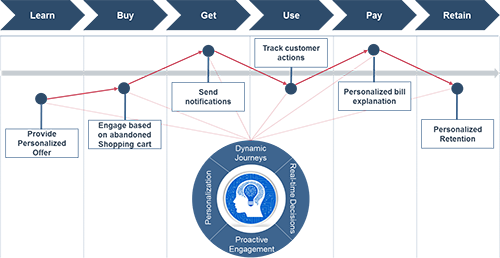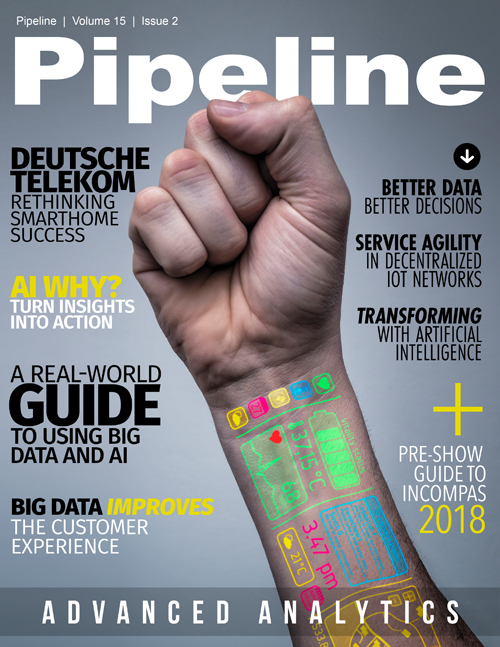Leveraging Big Data to Improve the Customer Experience
The Optimized Customer Journey: All About the Data
Understanding the customer journey is no simple task, because that understanding must embrace the processes and functions at every step of the customer lifecycle. That lifecycle can have many facets, as it extends from the beginning stages of learning about customers' requirements and expectations to the increasingly complex journeys customers take when they want to buy something or get something done. A typical journey for a customer creates substantial data at every step of the path, as seen in Figure 2 below.

Figure 2: The Customer Journey: From Education to Retention
Source: Netcracker Technology
(Click to enlarge image)
Successful understanding includes undertaking the following steps:
1. LEARN – Customer Acquisition Stage 1 – The provider first learns that the customer is interested in a certain service. Depending on the channel of preference, customer information is gathered via the call center, storefront or online channel. User name, address, phone number, device of preference, service bundle and so forth are all captured at this point. Data captured may come from a fixed or mobile POS terminal, web channel or CRM system.
2. BUY – Customer Acquisition Stage 2 – The customer actually sets up an account, signs on for services and services are activated. Based on the service bundle, at this point system activity creates critical data within the OSS layer: the activation, order management, and related fulfillment systems.
3. GET and USE – Customer Management – The customer journey is based on service consumption, and each transaction should be monitored to gain insight into the customer’s usage or spending patterns. Valuable data may come from BSS, customer care or related systems.
4. PAY – Business Management – The customer receives the bill and the subsequent demand for payment. Here, the BSS layer captures the most valuable data around service detail, consumption patterns, payment timing and any other related issues tied to revenue collection.
5. RETAIN – Customer Retention – All the data from the above sources is now of significant value to ensure that every step along the customer lifecycle has had a positive outcome.
An effective customer journey can only occur if a big data strategy is in place to gather information from many diverse sources. For service providers, a big data strategy needs to tap into all of the order-to-cash-to-care systems, as well as a variety of internal data such as network performance statistics, customer call records, billing details, service plans, and customer location to get the most accurate understanding of where the customer is in the lifecycle. All of this will be structured data, and the challenge comes if the data is housed across many different, hardened silos. In that scenario, it will be costly and time-consuming to collect this data.



















